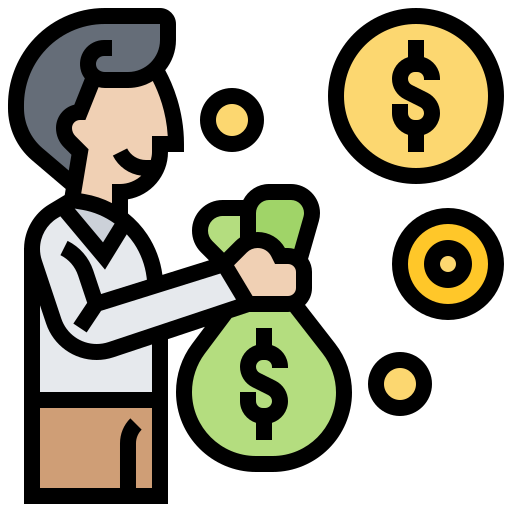Do you to double your money in a week?
Recently, there has been an abundance of articles titled “How to Double Your Money Overnight” that suggest methods like “margin trading” and “real estate investment.”
However, it is important to note that flipping a house within 24 hours presents significant challenges. Moreover, my main concern is that these posts often fail to address the associated risks.

Want to Make Extra Money Now?
While it is true that certain approaches, such as margin trading, may have the potential to double your money within 24 hours, they also come with considerable risks. One wrong move in margin trading could result in your broker contacting you with serious concerns.
Therefore, let’s have a comprehensive discussion about various methods to double your money in a day, categorized according to the risks involved should you decide to pursue them.
Please let me know if there are specific aspects or risks you would like me to emphasize, or if you have any additional preferences.
Max Out Your 401(k) Match
One of the most straightforward ways to double your money within 24 hours is by maximizing your 401(k) match.

While you may not have immediate access to these funds without facing significant IRS penalties, maximizing your 401(k) match can effectively double your money. It’s important to note that this doubling effect depends on whether your employer offers a 1:1 match or a partial match, such as 50%.
Even with the consideration of potential restrictions and match percentages, maximizing your 401(k) match remains the most reliable, risk-free approach to multiplying your money.
Moreover, the multiplication doesn’t cease after 24 hours, nor is it limited to doubling your money. Let’s illustrate this with an example: Suppose you earn $100,000 at age 35, and your employer offers a 1:1 match of up to 3.5%. By the end of the year, you contribute $3,500, and your employer matches with an additional $3,500.
Now, assuming a reasonable annual percentage yield (APY) of 7% compounded quarterly over 30 years, your employer’s initial $3,500 contribution at age 35 would grow to $28,067.14 by the time you reach age 65.
By maximizing your 401(k) match, you can benefit from long-term growth and secure a more financially stable future.
Flip Some Valuables

Flipping valuables is a potentially lucrative but somewhat unpredictable method to quickly multiply your money. By seeking out valuable items at places like Goodwill, garage sales, or auctions, you can resell them online at a higher price for a profit.
Let’s take my friend Sally as an example. Sally has a keen eye for designer clothes and accessories. When she visits consignment stores in upscale neighborhoods, she can quickly spot desirable items like Dolce & Gabbana or Prada. She purchases these items, refurbishes them if needed, and then flips them on platforms like eBay, achieving an average return on investment (ROI) of 450%.
Flipping valuables has the potential to double or even triple your money within 24 hours, and it can also be an enjoyable venture. However, before diving into this practice, it’s important to consider certain requirements and ethical aspects:
- Time: Flipping requires investing time in searching for valuable items at Goodwill, garage sales, and auctions. Additionally, you’ll need to allocate time for storing, refurbishing, and relisting the items for sale.
- Expertise: Like Sally, you need to develop a knowledge base in your chosen niche. Whether it’s identifying undervalued Rolexes, rare baseball cards, or other collectibles, you must understand the market, spot counterfeits, and accurately assess item value.
- Upfront investment: Flipping involves spending money to acquire items that you believe can be resold at a higher price. This introduces an element of risk, as there is no guarantee that every item will sell for a profit.
- Ethical considerations: Some debate whether purchasing goods from consignment stores and Goodwill with the intention of flipping them is ethically sound. However, in Sally’s case, she adds value to the items by refurbishing them and introduces them to a larger market. This can be seen as a form of arbitrage rather than artificially inflating prices through scarcity.
Start a Side Hustle
Starting a side hustle can be a challenging but rewarding way to generate additional income. While not all side hustles can become profitable within 24 hours, there are several options that have the potential to yield quick results with the right dedication and effort. Here are a few examples:
- Ridesharing: Platforms like Uber or Lyft allow you to earn money by providing transportation services to passengers. By signing up and meeting the necessary requirements, you can start driving and earning income in a short period of time.
- Teaching English as a second language (ESL) online: If you have strong English language skills, you can consider teaching English online to non-native speakers. Several platforms offer opportunities to connect with students and conduct virtual lessons, allowing you to start earning income relatively quickly.
- Freelancing: If you have marketable skills such as writing, graphic design, programming, or social media management, you can offer your services on freelance platforms like Upwork or Fiverr. With the right marketing and client acquisition strategies, you can start securing projects and generating income in a short timeframe.
- Babysitting or pet sitting: Offering your services as a babysitter or pet sitter in your local community can be a fast way to earn money. Many people are in need of reliable individuals to take care of their children or pets, and by promoting your services through word of mouth or local listings, you can start receiving job opportunities quickly.
Related: Make money from 3d printer
When starting a side hustle, it’s important to set clear goals, invest the necessary time and effort, and consider any legal requirements such as forming a business entity if needed. Remember that building a successful side hustle often takes persistence and dedication, but the potential for increased income and personal fulfillment can make it a worthwhile endeavor.
Want Quick Money?
- Discover the opportunity to earn income by answering surveys with Rakuten Insights, a renowned financial brand in America. Begin your journey by signing up here!
- InboxDollars allows you to monetize your time by answering surveys, viewing videos, online shopping, and more. Get your hands on a free $5 here!
Day Trading
Day trading, the practice of buying and selling assets within a 24-hour period, may appear simple, but it carries significant risks and potential for losses. While it is technically possible to double your money in 24 hours through day trading, the reality is that many individuals end up losing a significant portion of their investment.
At Investor Junkie, we do not recommend day trading due to its high level of risk. Although it may be perceived as less risky compared to margin trading or short selling, attempting to time the markets is still extremely challenging and unpredictable.
Here are some reasons why day trading is not advisable:
- Time commitment: Successfully timing the markets requires a substantial amount of time and effort. Even experienced full-time traders can make incorrect predictions, as individual assets are highly unpredictable. Even sophisticated quantitative funds struggle to consistently achieve accurate market timing.
- Capital requirements: Day trading involves substantial capital requirements. Pattern day traders, who execute four or more day trades within five days, must maintain a minimum of $25,000 in reserve capital to comply with SEC regulations. In other words, the SEC sets this requirement to ensure that day traders have a significant amount of capital to potentially mitigate losses.
- Higher taxes: Day trades not only present challenges in terms of tracking and reporting to the IRS but also result in higher tax rates. Long-term gains from assets held for more than a year are taxed at a lower rate of 15%, whereas short-term gains from day trading are taxed at a higher rate of 28%.
- High likelihood of losing money: Studies and estimates indicate that a significant majority of day traders end up losing money in the long run. The exact percentage varies, but experts agree that the odds are stacked against day traders. While there may be individuals boasting short-term gains on platforms like r/wallstreetbets, these success stories are rare exceptions rather than the norm.
Become Your Own Boss Today!
The ultimate guide on how to be your own boss
- In this guide, we’ll explain exactly why and how to be your own boss
- Best careers to be your own boss
Considering the risks involved and the low probability of consistent success, it is important to approach day trading with caution. It is often more prudent for investors to focus on long-term investment strategies that align with their financial goals and risk tolerance.
Options Trading
Options trading involves contracts that grant the right to buy or sell a specified number of shares of an asset at a predetermined price and date in the future. Call options provide the right to buy, while put options provide the right to sell. The predetermined price at which the trade occurs is known as the strike price.
For instance, let’s consider Tesla shares trading at $800, and you anticipate a decline to $600. You purchase call options with a strike price of $800, which grants you the right to sell 100 shares of TSLA at $800 within a month.
If the shares indeed fall to $600, you can buy 100 shares at $600, exercise your options contract, and sell them at the strike price of $800. Deducting the option cost of $50, you would have a net profit of $19,950 ($80,000 – $60,000 – $50).
Compared to futures trading, options carry less risk because they provide the choice to buy or sell rather than obligating you to do so. Additionally, options do not require owning the underlying asset. You can trade options without owning a single share of the stock, such as TSLA.
However, it is essential to recognize that options trading is still complex and carries inherent risks. Unlike stocks, options can lose their entire value upon expiration. Moreover, brokerage firms often require a formal application process to enable options trading due to the associated risks.
Given the complexities and risks involved, it is crucial to thoroughly understand options trading before engaging in it. It is recommended to educate oneself, seek professional advice, and consider one’s risk tolerance and investment goals before venturing into options trading.
Margin Trading
Margin trading involves investing with borrowed funds from your broker, which significantly amplifies the risk involved. It is important to note that margin trading carries substantial risks, including the potential loss of both your own money and the borrowed funds.
Here’s a breakdown of how margin trading works and why some traders choose to engage in it, as well as the potential for doubling your money in 24 hours:
- Identification of a short-term investment opportunity: You come across an enticing investment opportunity that you believe has significant short-term potential.
- Comparison of margin rates and opening a margin account: You assess the margin rates offered by different brokers, complete the necessary paperwork, and establish a margin account with a balance of $25,000 at an annual percentage yield (APY) of 10%.
- Utilizing borrowed funds: Since the Financial Industry Regulatory Authority (FINRA) requires a minimum of 50% of your own cash to be used for margin purchases, you invest $50,000 in the opportunity, using half of your own funds and half of the borrowed funds from your broker.
- Doubling of investment and repayment: If your investment doubles in value to $100,000, you would need to repay your broker the $25,000 borrowed, along with the applicable interest. After repaying the borrowed funds, you would be left with a profit of nearly $50,000, effectively doubling the amount you would have earned by investing only $25,000 of your own money.
For more options, check out our list of the best sites that pay you to sign up.
However, it is crucial to recognize the significant risks associated with margin trading. Market fluctuations can lead to substantial losses, which could not only wipe out your own invested capital but also leave you liable for repaying the borrowed funds. Margin trading requires a thorough understanding of market dynamics, careful risk management, and continuous monitoring of your positions.
It is essential to consult with a financial professional or advisor before engaging in margin trading, as they can provide personalized guidance based on your financial situation, risk tolerance, and investment goals.
